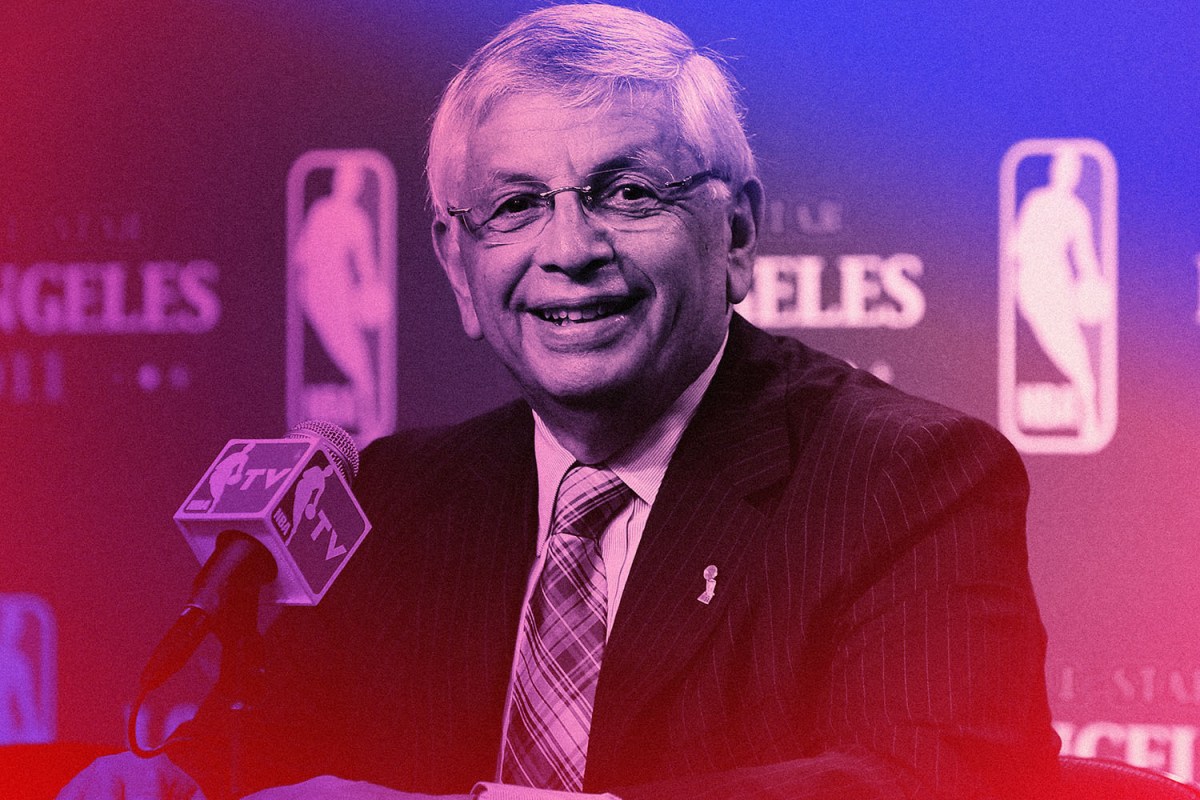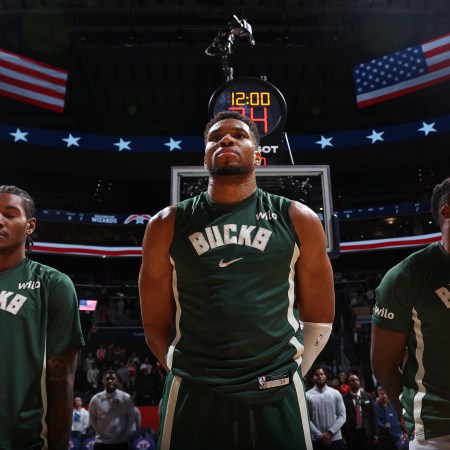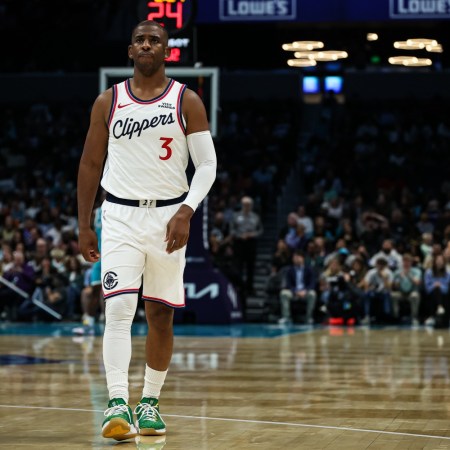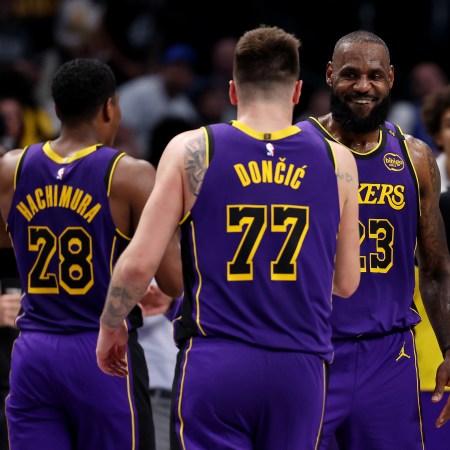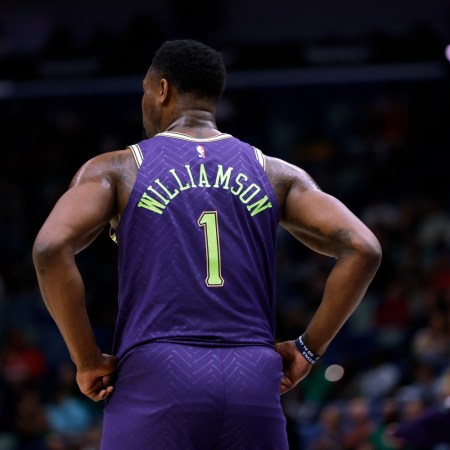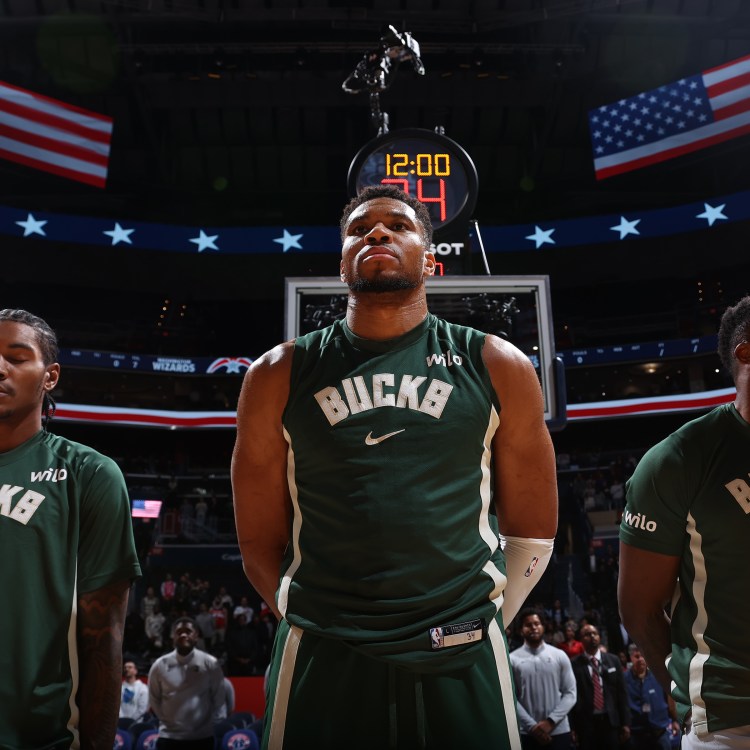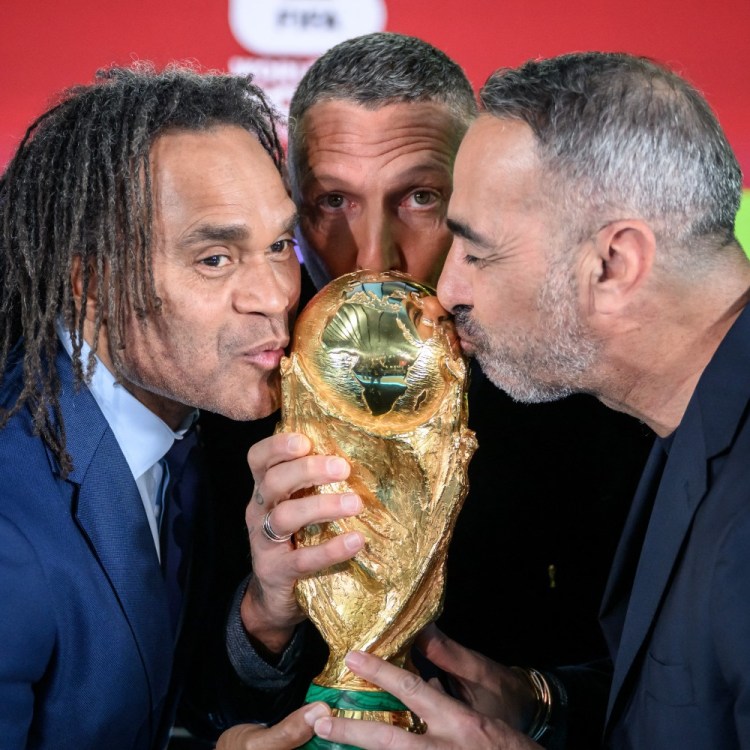The death of longtime NBA commissioner David Stern on New Year’s Day 2020 pierced the festive holiday fog — and probably subsided by the time the champagne bottles got placed in the curbside recycling. Kobe Bryant and his 13-year-old daughter, Gianna, died in a terrible helicopter crash less than a month later.
The games continued, the usual mid-season narratives prevailed. Even if the coronavirus hadn’t engulfed the nation in a now-familiar routine of mourning and rage, Stern’s passing wouldn’t have clouded the sports and entertainment empire he built and nurtured for more than 30 years. He was not one to bask in the spotlight, though he always knew who should.
To Stern, the league was defined by its players. Bird and Magic. Michael. Shaq. Kobe. LeBron. Steph. Giannis. People don’t watch movies for the producer or the studio; the personalities in front of the camera have always been the attraction. That’s what makes the games go: bright stars and a silent boardroom.
The NBA we know today — the players we know on a first-name basis; the non-stop TV coverage; the ubiquitous merchandise and sponsorships — came from relentless, grandeur-free effort, and it was all spearheaded by David Stern, who possessed a business and marketing acumen to match his seize-the-day work ethic. He knew what the league could achieve, and he was relentless in that pursuit.
Below, you’ll find an excerpt from my new book, From Hang Time to Prime Time: Business, Entertainment, and the Birth of the Modern-day NBA, which appears courtesy of Atria Books. shows (a sliver of) how Stern pushed the NBA toward his “vision.” From grueling start to glorious finish, Stern was never less than all-in. Neither were the men and women who followed his gospel.
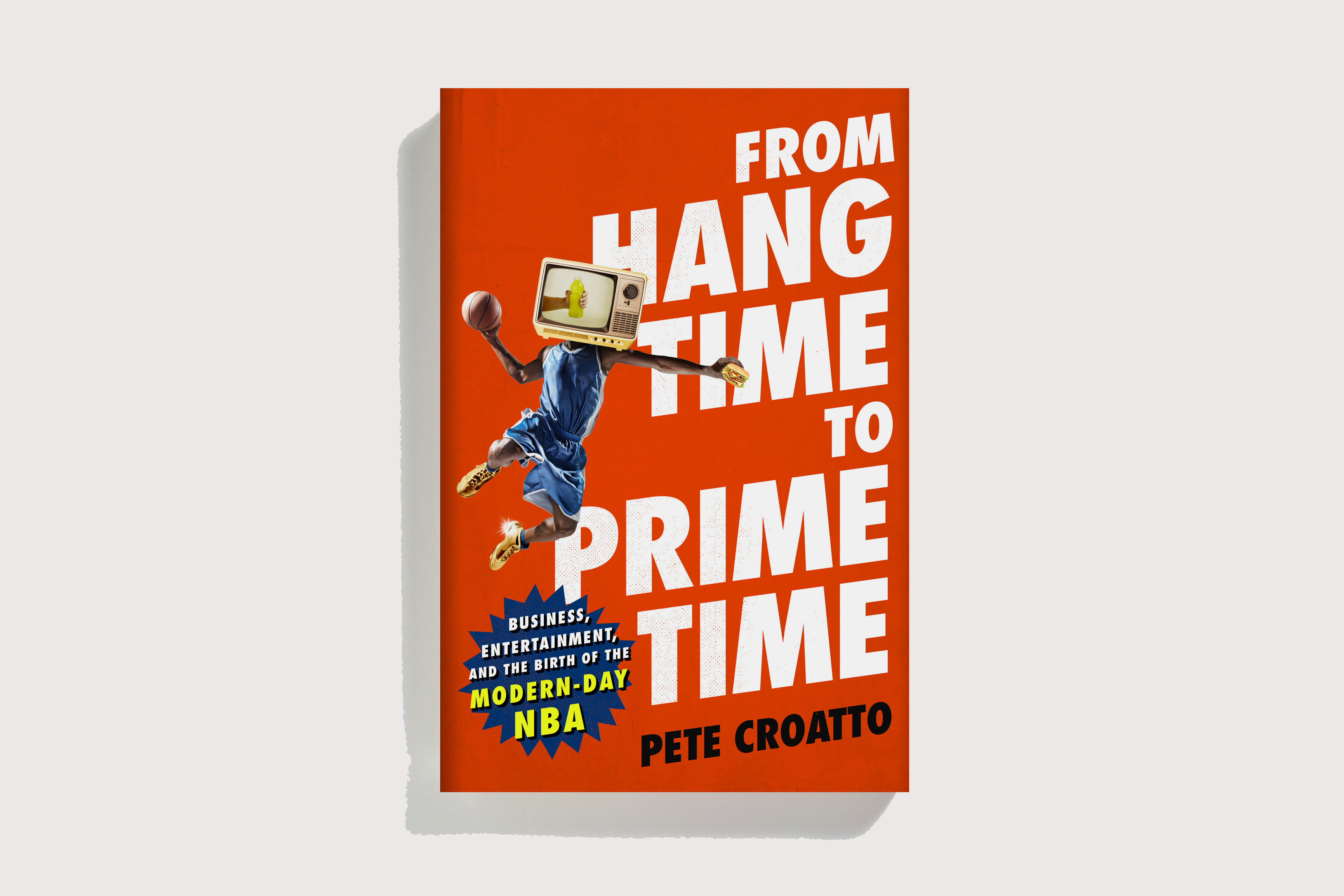
March 1982, Boston to New York City
Before Rob Millman boarded his flight to New York, he grabbed that day’s copy of the Boston Globe. He turned to the sports section and was greeted with nothing short of a warning to get off the plane, head home, and ghost the NBA.
It was the second part of the Globe’s weeklong series, “The National Basketball Affliction—The NBA: A Major League with Major Problems.”
Millman, a divisional sales manager and buyer at the established New England department store chain Jordan Marsh, was an NBA fan. He kept his job to interview with David Stern. At the NBA office, Millman asked Stern if anyone had called the NBA to comment on the Boston Globe’s series. No one had. “It seemed like either most people didn’t care enough at the time to bother to call and follow up about it or it didn’t matter,” Millman said. “As a person thinking about joining the organization, in some ways I was comforted, I guess. In some ways, I wasn’t.”
It took Stern ten minutes to allay Millman’s fears. Stern outlined his vision for the league. Marketing, sponsorships, publishing, and the players would work together to build a brand. Millman was transfixed and inspired. “That was the spirit and culture he created,” he said. “It was right from that first interview that I felt it.” Rick Welts, a future star in the league office, and Adrian De Groot also heard the sermon. The NBA needed to be a better partner. It had to embrace and showcase its history. It needed to work with the players so both sides shared in the success. Teams had to unite for the common good, working together and with the league. Stern weaved such a hopeful vision for anyone who loved the NBA and knew its potential. He talked only about what the NBA would become. Followers flocked.
“There was never a doubt that it wasn’t going to happen,” said De Groot, who became president of NBA Properties.
“He just kept working at it, and we kept banging away at it every day,” Millman said.
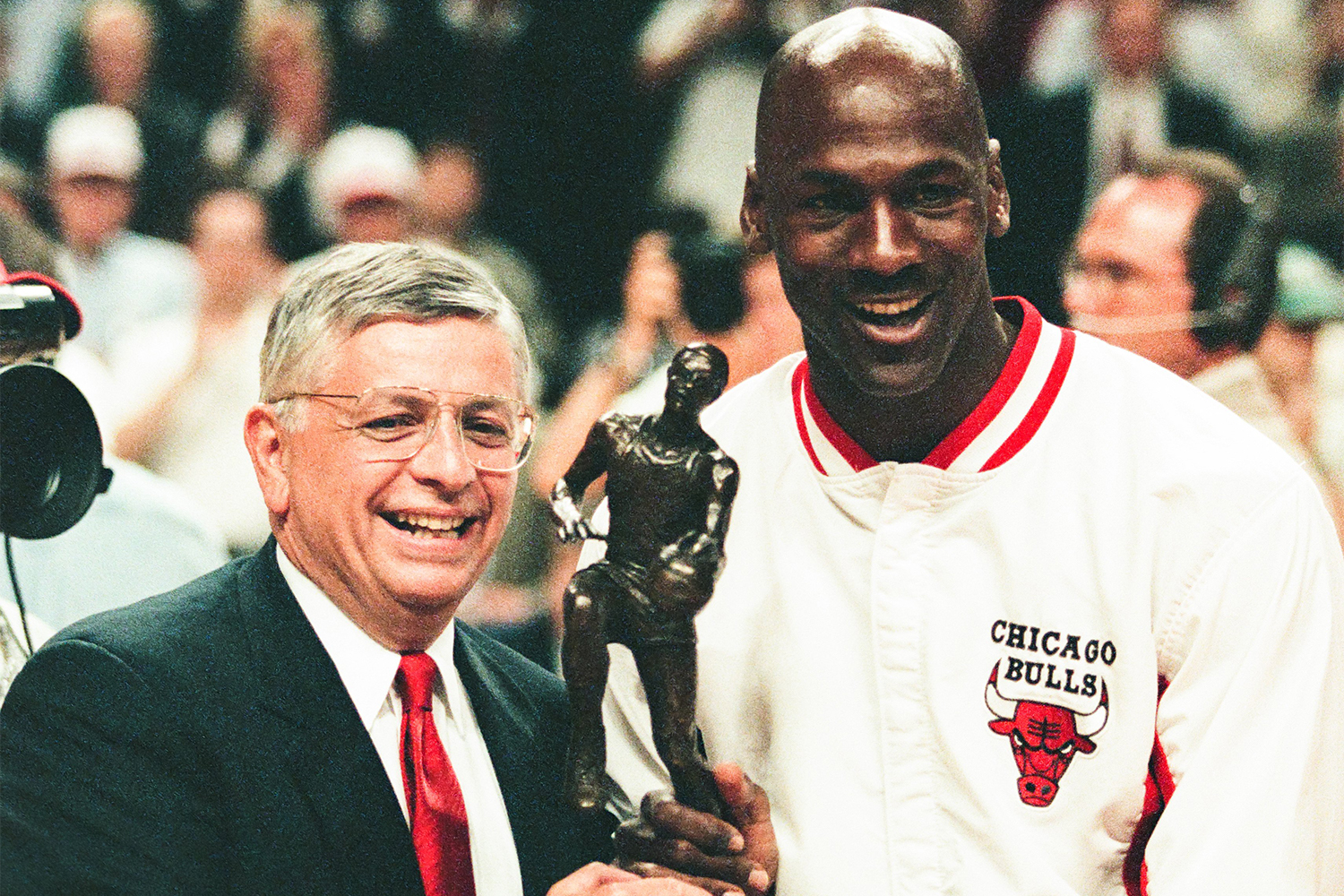
For Stern, the commercials, game telecasts, and halftime features served a greater purpose, Don Sperling said. “He had long-term vision,” he said. The idea, said Sperling, went beyond entertaining the public. “That’s why we did all those public service announcements with our players,” Sperling said. “David always said it wasn’t what they thought about you, it’s how they felt about you.”
Promoting the players, not the teams, drove that notion. As Sperling said, the NFL sold laundry. You rooted for a team. The NBA relied on personalities and marketing much more than the NFL. There was a good reason. The players weren’t hidden under helmets, so you could root for Charles Barkley, but feel indifference toward the Philadelphia 76ers. You could watch a Nets game to see Larry Bird turn the Meadowlands into his home court. “David’s vision was the NBA players are the NBA, so put all your focus on them,” said Bill Marshall, who helped make league apparel relevant.
Reaching that goal was a continuous task. Sunday night, after the day’s broadcasts on CBS, Sperling got a phone call from Stern to review the day’s action and look ahead. But every so often, Stern’s voice started low and soft, the calm before the thunder raged. “You’d go, ‘Uh-oh, I’m waiting,’” Sperling said. He didn’t come to that anger lightly. Like a prosecutor, Stern built a case before unleashing his wrath, said Steve Mills, who started his lengthy basketball career at NBA Properties. You had no idea if you were the first or fifth call, Mills said, but “you just hoped you weren’t the last call.” That meant Stern had spoken to ten people beforehand and was now “waiting to see what you’re going to say.”
Stern admitted that he could be unpleasant when disappointed, but it was “in pursuit of a greater good.” Underneath the anger was love. “We each enjoyed each other’s company.” Like many of his colleagues, Sperling saw the tirades as Stern’s way of communicating a teachable moment. Everyone, to borrow longtime NBA employee Rod Thorn’s phrase, “got read”—as in “read the riot act”—from time to time and knew exactly what that meant. Little things mattered. Stern hated if the phone wasn’t picked up promptly. Before you left, no matter how late it was, you returned every phone call. “Quite frankly, it’s the right way to run a business,” said Marshall. The NBA had to try hardest, because it had no choice. There was no goodwill to fritter.
“I used to say to people all the time, because I think it made the NBA unique: It’s the only place I ever really knew of where everybody’s boss worked harder than they did,” said Ski Austin, a longtime NBA employee. The relationship Austin had with his superiors was like parents and children. “There are different ways to push buttons and different ways to incentivize people and ways to set the expectation level,” he said. “Underneath it all, there’s a love of your brand and your product. And you understand that’s where it’s coming for: it’s all about the game. As an individual, I didn’t want to disappoint Steve Mills, when I worked for him. I didn’t want Russ Granik or Rick Welts or Adam Silver or David Stern ever to be in a position where they didn’t know what was going on. Even if it was bad.”
“I don’t recall having any sort of trepidation about the future,” said Michele Brown, the former brand director at NBA Properties, who started in 1982. “I think we were so grounded in the vision, and so inspired and motivated by what we were doing. That’s where our focus was: We’re in the beginning stages. Let’s just believe that this is a possibility.” What buoyed Brown’s confidence was the strategic growth. She saw how inventive Adrian De Groot and Bill Marshall were in packaging the NBA. She knew she was part of something big.
Stern’s genius came with that fiery disposition. “I think he fired me three times over the years,” said veteran Austin. One longtime NBA employee thought that since Stern was smarter than everyone else and worked harder than everyone else, he was perpetually disappointed because nobody lived up to his standards. Brown said if you left the office at 5:30 p.m. or 6 p.m., and ran into Stern by the elevators, you’d hear about it. Oh, so half a day? Staying late, she said, became a cultural expectation and “we worked our asses off.” John Kosner, formerly of CBS Sports, joined the NBA in 1987. He loved the job, but “felt like a piker over there.” Once, Stern came down to Kosner’s office at 6:30 with his half-a-day line, and asked Kosner about this day.
“I’m buried,” Kosner said. “I’ve never worked so hard.”
“Maybe if you do that—and do it even better for another eighteen years—you’ll feel the way I do,” Stern said.
During Steve Mills’s last interview with Stern before he joined the NBA, Stern warned the young applicant of the world he was about to enter. “You know, there are going to be nights where—and I want you to go home and talk to your wife about this—you’re going to be spending the night at the hotel here in the city because it’s going to be so late that it’s not going to make sense for you to go home.”
Stern’s work ethic remained tireless, fed by his passion for the product and a break room treat of coffee and Saltines. He didn’t treat a vacation like enervated mortals did. He’d return with legal pads crammed with notes and ideas. “He’d go away on vacation, but he was always calling you,” Mills said. “It was nonstop.” One Saturday, Mills and colleague Joel Litvin were confined to the office, toiling away on the new collective bargaining agreement. Stern called and lit into the two men. Shouldn’t this guy be lounging by a pool in Aspen? Mills thought.
Stern loved to walk around the office at 7 p.m. and take note of who was there. “There wasn’t a lot of talk about work-life balance, because he probably wasn’t the best example of that either,” Rick Welts said. What stood out, he thought, was Stern approached tasks each day as if he were learning it for the first time, ready to venture from the norm. It was a rare skill to possess, and one Stern mastered.
Employees had leeway to do their jobs. The NBA was a vertical organization, attorney Bill Jemas said: You got an entire area to run, but a safety net of superiors. There really wasn’t a low-level position. “You’d get a vertical slice, so you could see in your area the top-level work and
the lower-level work,” Jemas said, “and then you’d work next to another person who had his own vertical slice.” That arrangement bred collaboration. In the 1990s, John Kosner converted the graphics on TNT and NBC broadcasts into graphics for trading cards, which Jemas ran.
Stern joked that if he wrote a memoir, it’d be titled Episodic Micromanagement Is Underrated. “He wanted to be told the truth, and you better be prepared when you’re going in to meet him,” said David Gavant, the longtime NBA Entertainment employee. “He was always five steps ahead of you.” When Sandy Brown started to get NBA programming into foreign markets in the late 1980s, Stern would pop his head into Brown’s office for a pop quiz. “Brown, how many households are there in Uzbekistan?” Talking to Stern was like “taking the witness stand,” said Jon Miller. “You had to be ready for your cross-examination.”
“If he yelled at you for something, it was because he felt you had missed an opportunity or you hadn’t seen something clearly,” Arlene Weltman of NBA Properties said. “It wasn’t because he was in a bad mood that day. He wanted things to be as perfect as they could be, and he wanted things to be as right as they could be. And he wanted you to have a plan.”
One day, Weltman and her colleague, Don Stirling, director of sponsorship at NBA Properties, were called into Stern’s office to discuss some long-forgotten topic. Stern, as was his wont, fired a series of questions. Then the fatal, unanswerable one arrived. The duo tried to bluff their way with less-than-solid information. Stern caught them and unloaded into both with such vitriol that Stirling equated the haranguing to an out-of-body experience “To this day, I can see it clearly and hear it clearly,” said Stirling, who felt there was nothing personal about the outburst. Stern considered Weltman and Stirling his teammates. They best come prepared. After all, information was currency. The more you had, the better a business ran. And Stern had an “insatiable passion” to turn the NBA into the greatest sports league on the planet.
Stern did whatever it took to get there.
The Charge will help you move better, think clearer and stay in the game longer. Subscribe to our wellness newsletter today.
